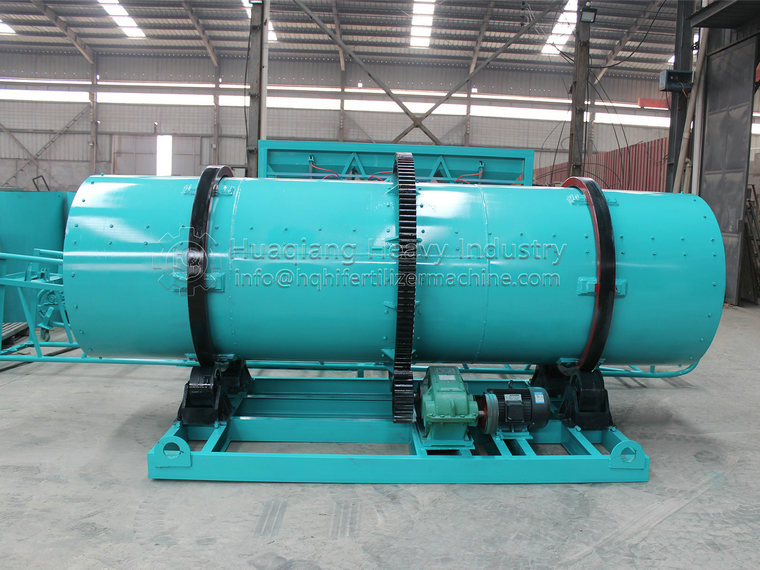The rotary drum granulator has a wide range of applications in the industrial production field, and its unique equipment principle endows it with many application advantages. Exploring its principles and advantages in depth can help to better understand and apply this device.
The equipment principle of the rotary drum granulator is based on the rotational motion of the drum and the complex physical process of materials inside the drum. After the equipment is started, the drum starts to rotate under the drive of the transmission device. Powdered materials enter the drum through the feeding system, and under the centrifugal and frictional forces generated by the rotation of the drum, the materials move upward along the inner wall of the drum, and then fall back under the action of gravity, forming a cyclic motion.
During the material circulation process, the spraying system evenly sprays the adhesive onto the material. The binder reduces the surface energy between material particles, causing them to attract and bond together, forming tiny aggregates. As the drum continues to rotate, these aggregates continuously adsorb the surrounding powdery materials through rolling and collision, gradually growing into larger particles.

The principle of this equipment has brought significant application advantages to the rotary drum granulator. Firstly, it has good material adaptability. Whether it is organic or inorganic materials, as long as the appropriate binder is selected, efficient granulation can be achieved. This enables the rotary drum granulator to play an important role in multiple industries such as fertilizers, chemicals, and feed.
Secondly, the particles produced by the rotary drum granulator have good physical properties. Due to the sufficient rolling and collision of the material inside the drum, the shape of the particles is relatively regular, the surface is smooth, and the strength and stability of the particles are high. This is highly attractive for industries that have strict requirements for product appearance and quality.
Furthermore, the operation of the rotary drum granulator is relatively simple and the maintenance cost is low. Its structural design is reasonable, the functions of each component are clear, and operators can proficiently master the operation methods of the equipment after simple training. At the same time, the equipment has relatively few components and is easy to disassemble and replace, reducing the difficulty and cost of maintenance.
In addition, by adjusting parameters such as the speed of the drum and the amount of adhesive sprayed, the drum granulator can flexibly control the size, shape, and output of particles to meet the personalized needs of different customers.
The rotary drum granulator, with its unique equipment principle and numerous application advantages, has become an indispensable granulation equipment in industrial production, making important contributions to improving production efficiency and product quality.